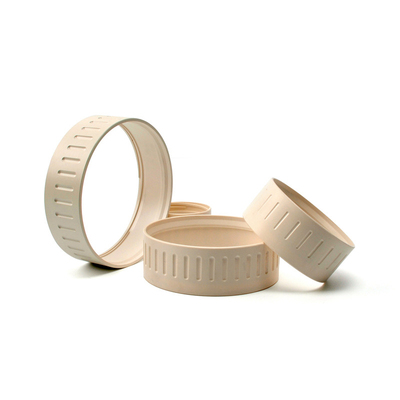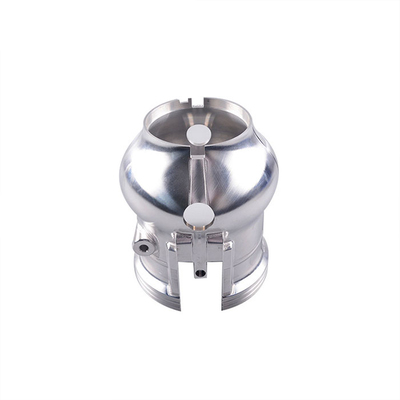Unveiling the Variances Between 1060 and 6061 Aluminum Sheets

Among the multitude of aluminum alloys available, 1060 and 6061 alloys emerge as stalwarts, each boasting distinct characteristics and applications. Understanding the disparities between these alloys—1060 and 6061—proves pivotal for making informed decisions in material selection for diverse engineering and manufacturing endeavors.
An Insight into Aluminum Alloys
Before delving into the nuances of 1060 and 6061 aluminum alloys, it's imperative to comprehend the significance of aluminum alloys in general. Aluminum, in its pure form, exhibits commendable properties like lightweight nature, corrosion resistance, and malleability. However, the addition of alloying elements confers enhanced attributes, tailoring the material to specific applications.
1060 Aluminum Alloy: The Versatile Workhorse
At the outset, the 1060 aluminum alloy emerges as a stalwart known for its exceptional formability, corrosion resistance, and electrical conductivity. Comprising 99.6% aluminum, this alloy remains almost entirely free from impurities, making it remarkably pliable and conducive to various fabrication processes.
Chemical Composition: The 1060 alloy predominantly consists of aluminum, with minimal amounts of other elements. Copper (Cu) accounts for 0.05%, while other impurities remain below 0.03% each.
Properties and Applications: The 1060 aluminum alloy’s notable attributes include excellent conductivity and high thermal and electrical properties. These qualities render it particularly suitable for applications demanding thermal dissipation, such as heat sinks, electronic components, and radiators. Its remarkable workability also makes it an ideal choice for intricate shaping in the manufacture of reflectors, signage, kitchenware, and decorative parts.
Mechanical Characteristics: Despite its malleability, the 1060 alloy possesses limited strength and is relatively soft compared to other alloys. Its tensile strength typically ranges around 75 MPa, offering moderate strength but superior ductility.
6061 Aluminum Alloy: The Sturdy All-Rounder
On the other hand, the 6061 aluminum alloy exhibits a markedly different composition and performance profile compared to 1060. Renowned for its exceptional strength and versatility, this alloy combines a blend of essential elements to achieve a balance between strength, machinability, and corrosion resistance.
Chemical Composition: 6061 aluminum consists of aluminum, magnesium (Mg) as the primary alloying element (ranging from 0.8% to 1.2%), silicon (Si) at 0.4% to 0.8%, iron (Fe) at 0.7% maximum, copper (Cu) at 0.15% to 0.4%, zinc (Zn) at 0.25%, and manganese (Mn) at 0.15% maximum.
Properties and Applications: The 6061 alloy’s hallmark attributes encompass excellent weldability, high tensile strength (ranging from 124 to 290 MPa), and good corrosion resistance. These characteristics make it an ideal choice for structural components, aerospace applications, marine fittings, automotive parts, bicycle frames, and various machinery components.
Mechanical Characteristics: Unlike the 1060 alloy, 6061 aluminum is heat-treatable, enabling enhancements in its mechanical properties through heat treatment processes. This alloy offers a fine balance between strength and workability, catering to diverse applications requiring both durability and formability.
Comparative Analysis: Understanding the Differences
When juxtaposing the 1060 and 6061 aluminum alloys, several critical differentiators come to the forefront, each impacting their suitability for specific applications.
1. Strength and Durability: One of the most prominent distinctions lies in their mechanical properties. While the 1060 alloy excels in formability and electrical conductivity, it falls short in terms of strength compared to the robustness of the 6061 alloy. The latter exhibits significantly higher tensile strength, making it an ideal choice for load-bearing and structural applications.
2. Corrosion Resistance: Both alloys offer commendable resistance to corrosion. However, the 6061 alloy, with its additional alloying elements like magnesium and silicon, tends to have better overall corrosion resistance compared to the relatively pure 1060 alloy.
3. Formability and Workability: In terms of formability and workability, the 1060 alloy outshines 6061. Its high ductility and ease of manipulation make it a preferred choice for applications requiring intricate shaping and stamping.
4. Heat Treatment Capability: Another notable disparity lies in their heat-treatability. The 6061 alloy's ability to undergo heat treatment facilitates enhancements in its mechanical properties, allowing for tailored adjustments based on specific application requirements. In contrast, the 1060 alloy lacks heat-treatability, limiting its potential for mechanical property modifications through heat treatment processes.
Conclusion: Tailoring Choice to Application Needs
In conclusion, the disparities between the 1060 and 6061 aluminum alloys underscore the importance of selecting the most appropriate material for a given application. The 1060 alloy stands out for its exceptional formability and electrical conductivity, catering to applications necessitating intricate shaping and excellent electrical properties. Conversely, the 6061 alloy shines in scenarios demanding robust mechanical strength, corrosion resistance, and the ability to withstand heavier loads in structural and load-bearing capacities.
Final Thoughts
Deciphering the differences between the 1060 and 6061 aluminum alloys unveils the diverse characteristics and applications of these versatile materials. While both alloys have their distinct advantages, their unique properties enable engineers and manufacturers to make informed decisions in material selection, ensuring optimal performance and functionality across various industries. Understanding these nuances is paramount in harnessing the full potential of these aluminum alloys for an array of applications, driving innovation and advancement in diverse sectors worldwide.
Reprint Statement: If there are no special instructions, all articles on this site are original. Please indicate the source for reprinting:https://www.cncmachiningptj.com/,thanks!
 3, 4 and 5-axis precision CNC machining services for aluminum machining, beryllium, carbon steel, magnesium, titanium machining, Inconel, platinum, superalloy, acetal, polycarbonate, fiberglass, graphite and wood. Capable of machining parts up to 98 in. turning dia. and +/-0.001 in. straightness tolerance. Processes include milling, turning, drilling, boring, threading, tapping, forming, knurling, counterboring, countersinking, reaming and laser cutting. Secondary services such as assembly, centerless grinding, heat treating, plating and welding. Prototype and low to high volume production offered with maximum 50,000 units. Suitable for fluid power, pneumatics, hydraulics and valve applications. Serves the aerospace, aircraft, military, medical and defense industries.PTJ will strategize with you to provide the most cost-effective services to help you reach your target,Welcome to Contact us ( [email protected] ) directly for your new project.
3, 4 and 5-axis precision CNC machining services for aluminum machining, beryllium, carbon steel, magnesium, titanium machining, Inconel, platinum, superalloy, acetal, polycarbonate, fiberglass, graphite and wood. Capable of machining parts up to 98 in. turning dia. and +/-0.001 in. straightness tolerance. Processes include milling, turning, drilling, boring, threading, tapping, forming, knurling, counterboring, countersinking, reaming and laser cutting. Secondary services such as assembly, centerless grinding, heat treating, plating and welding. Prototype and low to high volume production offered with maximum 50,000 units. Suitable for fluid power, pneumatics, hydraulics and valve applications. Serves the aerospace, aircraft, military, medical and defense industries.PTJ will strategize with you to provide the most cost-effective services to help you reach your target,Welcome to Contact us ( [email protected] ) directly for your new project.

- 5 Axis Machining
- Cnc Milling
- Cnc Turning
- Machining Industries
- Machining Process
- Surface Treatment
- Metal Machining
- Plastic Machining
- Powder Metallurgy Mold
- Die Casting
- Parts Gallery
- Auto Metal Parts
- Machinery Parts
- LED Heatsink
- Building Parts
- Mobile Parts
- Medical Parts
- Electronic Parts
- Tailored Machining
- Bicycle Parts
- Aluminum Machining
- Titanium Machining
- Stainless Steel Machining
- Copper Machining
- Brass Machining
- Super Alloy Machining
- Peek Machining
- UHMW Machining
- Unilate Machining
- PA6 Machining
- PPS Machining
- Teflon Machining
- Inconel Machining
- Tool Steel Machining
- More Material





